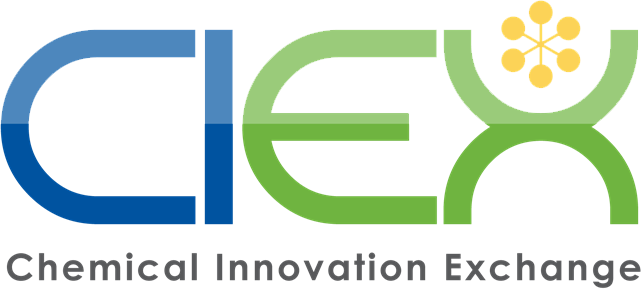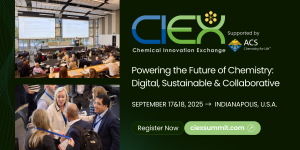R&D in Specialty Chemicals: How Arkema Is Driving Innovation
Editor’s Note: Arthur Martin is Vice President of R&D North America at Arkema, leading innovation in Advanced Materials, Specialty Adhesives, and Coatings. With over 25 years of experience and 22 U.S. patents, he brings deep expertise in specialty materials and product commercialization.

Arthur W. Martin, VP R&D North America, Arkema
Arthur will speak at CIEX 2025, held on September 17–18 in Indianapolis, U.S.A., alongside leaders from Dow, 3M, BASF, DuPont, and more. Below is a preview of the insights he’ll share at the summit.
CIEX: Without giving too much away – what is the core message of your talk and what would you like delegates to remember?
Arthur: There has been a continuous reduction in R&D spending as a percentage of revenue by most specialty companies over the last 20-30 years. Currently, most specialty companies spend approximately 2.7% on average across the three (3) horizons of innovation. This is a reduction from 10-15% previously spent in prior years. Therefore, it is incumbent for innovation leaders and executives to be creative in how they prioritize, select and valuate R&D technology programs in their innovation portfolio.
Elasticity in innovation gives an R&D organization the flexibility to adapt and respond quickly to changes in technology, market demand, and competitive pressure. Specifically, it enables the organization to shift resources dynamically to allocate talent, R&D investment, and tools more efficiently to high-potential projects or pivot when needed to scale innovation efforts by ramping up or scaling down R&D activities based on opportunities, risk, or performance feedback without major disruption.
In Arkema, accelerating the time-to-market by responding faster to emerging trends or customer needs gives us a competitive advantage. Empowerment of our R&D scientists to experiment more freely and take innovative risk can provide unexpected results that provide significant value. Supporting a culture of rapid prototyping and learning allows multiple innovative pathways to be explored in parallel and finally resilience to failure to absorb setbacks and reallocate efforts without derailing the overall innovation agenda remains critical to the innovation process.
In short, elasticity empowers an R&D organization to remain agile, resilient, and competitive in a fast-changing environment.
CIEX: What motivates you to join CIEX this year?
Arthur: I’m motivated to join CIEX because they offer a unique space to collaborate with forward-thinking innovation leaders who are passionate about solving complex problems and shaping the future. CIEX is not just about generating new ideas and discussing new concepts in the innovation space, they’re about turning those ideas into real, scalable impact. I’m driven by the opportunity to learn from both other strategic and visionary leaders and contribute my own perspective to meaningful, future-focused initiatives. Being part of such a community helps me grow as a leader, stay ahead of trends, and continuously challenge myself to think creatively and lead with purpose.
CIEX: In what ways have emerging technologies most significantly transformed your R&D process over the past few years – and what impact has this had on speed to market?
Arthur: I have recently created an Emerging Technologies department over the past year. I am already experiencing a positive impact. I have developed a fail-fast mechanism and open innovation while having closer connection with the business units. The new technology platforms within Arkema utilize existing assets and are market and customer-focused, leading to faster time-to-market, better product-market fit, and smarter decision-making.
I have created technology enablers through digital transformation and open innovation to shift from the linear process of execution to a more agile approach, faster iteration loops between teams (R&D, product, commercial), parallel development and testing rather than sequential handoffs, more customer focused, and market need approach to technology development delivering more value to the businesses.
This approach has resulted in shortened development timelines and better alignment with changing business needs.
CIEX: What are the biggest challenges – and best practices- you´ve seen in scaling innovation from lab to market while staying aligned with business objectives?
Arthur: In my 25+ years of experience, I would not say I have seen it all, but I have experienced enough to view challenges from the landscape of opportunities. Here are some of my perspectives on the opportunities we have to create solutions: The gap between a promising prototype and a viable, scalable product often lacks funding, sponsorship, or a clear path forward, misalignment with core business goals: Innovations may be technically brilliant but not aligned with strategy, customer needs, or revenue models.
I have also experienced siloed operations in R&D, product, marketing, and commercial teams, often operating independently, leading to disconnects and delays.
Sometimes, technologists are overly optimistic to the challenges of scalability and not identifying risk and threats in the timely and intuitive manner they should, therefore, underestimating scale-up complexity where technical challenges, regulatory hurdles, supply chain issues, and customer adoption are often more complex than anticipated.
Let’s not forget the cultural impedance, resulting in Internal resistance to change or fear of cannibalizing existing products can kill innovation before it takes off.
Also, from company to company or business unit to business unit within one company, the lack of a repeatable process becomes the Achilles heel too often for organizations. They still rely on ad hoc innovation rather than a structured process for scaling from lab to market. The best practices such as stage gate process, agile innovation, design thinking and other innovation processes are often ignored.
CIEX: Open innovation, customer responsiveness, and integrated supply chains are gaining traction. What partnerships or collaborations have been most impactful in driving sustainable growth for your business?
Arthur: Open innovation, customer intimacy, and integrated supply chains are indeed critical to sustainable growth. In our business, the most impactful partnerships have been those that combined cross-industry collaboration with shared innovation goals. For example, we’ve worked closely with custom toll synthesis providers to develop novel material solutions that enhance supply chain agility. We’ve also partnered with key customers to co-create products tailored to adjacent and evolving market needs, allowing for faster feedback loops and improved customer satisfaction. Additionally, strategic alliances with sustainability-focused organizations have helped us reduce our environmental footprint while aligning with global ESG standards. These collaborations have not only strengthened our market position but also embedded long-term resilience into our business model.
CIEX: Looking ahead, what do you see as the most critical capability chemical companies must develop to remain competitive in the next decade?
Arthur: Looking toward the future, I think there are several critical capabilities that must be realized or exemplified to have a competitive edge. They are mastering a circular economy, sustainable, renewable sourcing of raw materials and low carbon emission processes, digital and AI-driven innovation and ecosystem collaboration are imperatives. These are essential parameters to remain on the competitive path.
CIEX: Thank you so much, Arthur! We look forward to hearing more from you at CIEX 2025!
Powering the Future of Chemical Industry at CIEX 2025 Summit
CIEX is the leading platform for senior-level R&D, innovation, and sustainability professionals from the consumer, industrial, and specialty chemical sectors. Now in its 11th edition, CIEX is focused on creating value by bringing together the right people, fostering synergies, and actively facilitating connections among potential partners.
Join us on September 17 & 18, 2025, in Indianapolis, U.S.A. and get exclusive access to the community powering the future of chemistry — digital, sustainable and collaborative!
🎟Register today to secure your spot!

